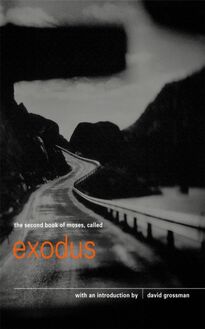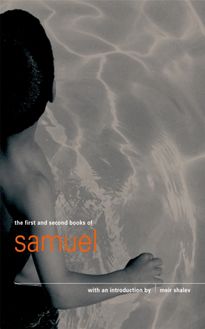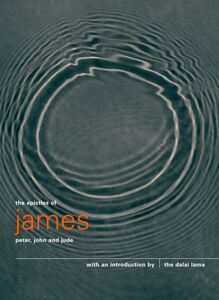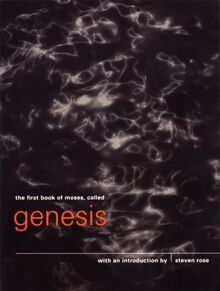Gospel According to Matthew , livre ebook
58
pages
English
Ebooks
1999
Vous pourrez modifier la taille du texte de cet ouvrage
Obtenez un accès à la bibliothèque pour le consulter en ligne En savoir plus
Découvre YouScribe et accède à tout notre catalogue !
Découvre YouScribe et accède à tout notre catalogue !
58
pages
English
Ebooks
1999
Vous pourrez modifier la taille du texte de cet ouvrage
Obtenez un accès à la bibliothèque pour le consulter en ligne En savoir plus
Publié par
Date de parution
01 janvier 1999
Nombre de lectures
1
EAN13
9780857860965
Langue
English
Contents
Title Page a note about pocket canons introduction by a. n. wilson the gospel according to st matthew 2 3 4 5 6 7 8 9 10 11 12 13 14 15 16 17 18 19 20 21 22 23 24 25 26 27 28 about the author Copyright
a note about pocket canons
The Authorised King James Version of the Bible, translated between 1603–11, coincided with an extraordinary flowering of English literature. This version, more than any other, and possibly more than any other work in history, has had an influence in shaping the language we speak and write today. Presenting individual books from the Bible as separate volumes, as they were originally conceived, encourages the reader to approach them as literary works in their own right.
The first twelve books in this series encompass categories as diverse as history, fiction, philosophy, love poetry and law. Each Pocket Canon also has its own introduction, specially commissioned from an impressive range of writers, which provides a personal interpretation of the text and explores its contemporary relevance.
introduction by a. n. wilson
You are holding in your hands a tiny book which has changed more human lives than The Communist Manifesto or Freud’s Interpretation of Dreams : a book which has shaped whole civilizations: a book which, for many people, has been not a gospel but The Gospel.
And you are bound to ask, because you are born out of time in a post-Christian age, into a world of newspapers and investigative reporting and science – ‘Is it true?’
Did a Virgin really conceive (1:23) and give birth to a boy-child in Bethlehem (2:1)? Did wise men, guided by a star, come to worship him (2:2)? Did he grow up to be able to walk on water (14:26), to perform miracles, to found the Church (16:26), to rise from the dead?
Stop, stop. Don’t ask. They are all questions which seem reasonable enough, but they will lead you into the most pointless, arid negativism. Your educated, scientific, modern mind will decide that no one ever walked on water; no Virgin ever conceived; that corpses do not come to life. And by rejecting this Gospel, you will reject one of the most disturbing and extraordinary books ever written; not, as you might think, on intelligent grounds, but because you (and I, alas) are too hemmed in by our imaginative limitations to see the sort of things this book is doing.
Before you apply to it the supposedly rational tests which you would apply to a newspaper report or a television documentary, imagine the chapters which describe the trial and Crucifixion of Christ set to music in Bach’s Saint Matthew Passion . Consider the millions of people who, for the last 1900 years have recited the prayer (6:9–13) which begins ‘Our Father’. Think of the old women in Stalin’s Russia, when the men were too cowardly to profess their loyalty to the Church, who stubbornly continued to chant the opening verses of the Sermon on the Mount in defiance of the kgb. ‘Blessed are they that mourn for they shall be comforted’ (5:4).
This is a book, not of easily-dismissed fairy tales but of power and passion; more arresting, disturbing and truthful than most reading-matter which you could buy for the price of a magazine on a station bookstall or in the paperback store. This is the Gospel of Christ, in all its terribleness, its wonder, its awe-inspiring truth and its self-contradictions.
Nor should you think that the contradictory emotions which assail and trouble you as you read it – as trouble you they must – are all storms and tempest inside you . For this book itself was born out of conflict and struggle and contradiction.
Matthew’s Gospel reflects the tension which saw the new religion – what we call Christianity – being fashioned from the old – Judaism. It is by paradox an intensely Jewish, and an intensely anti-Jewish work – indeed it is the great Ur-text of anti-semitism. The historical Jesus is not to be found in this book, nor in any book. He eludes our search. Matthew’s Jesus is seen through the prism of a particular faith, of a particular group, somewhere in the Mediterranean world. Rome? 85–100 AD ?
By the time the book reached something like its present form (50 years after Jesus had left the scene?) Christianity was emerging as something which, if not distinct from Judaism, was at least repellent to most Jews. Paul’s Letter to the Galatians (of circa 50 AD ) describes a rift between the first Christians of Asia Minor, converts of Paul, and the followers of Peter and James in Jerusalem who had known the earthly Jesus. It seems like an angry and irreconcilable quarrel. Paul, though, or because, a Jew, had decided that those who followed the Jewish Law ( Torah ), the Law given by God on Mount Sinai to his people, were living in bonds from which Christ came to set them free. For Peter and his friends, the dietary laws of Judaism, the requirement of circumcision, and so forth, were ‘not bonds but wings’; they were symbols of lives dedicated to God.
No compromise, surely, was possible, between these two ways? Either you circumcise your son or you don’t. Either it is sinful to eat pork, or it isn’t.
But to another generation, Matthew’s, the problems were different. The irreconcilables, rather than being fudged, are held together in self-contradiction. Peter and Paul, who in earlier New Testament texts were the leaders of opposing Ways, emerge in this text as co-partners (though, of course, Paul’s ideas, rather than his name, are what we find here).
It is Jesus himself, in this legendary reconstruction, who speaks lines which, in an earlier generation of Christianity, had been assigned to protagonists in the quarrel. On the one hand, with the followers of Paul, he wants to leave the synagogue. See chapter 12, a key moment, when the Pharisees accuse Jesus of breaking the Law by healing a man on the Sabbath. His reaction is to lead his people away from the mainstream of Jewry, but he does so, as Paul had done, by quoting the Jewish Scriptures. ‘I will put my spirit upon him, and he shall shew judgment to the Gentiles’ (12:18). On the other hand, Matthew’s Jesus is not simply a libertarian like Paul. He wishes to reassure the Jewish conservatives: ‘Think not that I am come to destroy the law, or the prophets: I am not come to destroy, but to fulfil’ (5:17).
How is the miracle accomplished? It is done by seeing the new congregation or synagogue, or gathering-together of the Elect as the New Israel: the Church.
So Matthew constructs his book as a miniature Torah . Like Moses, Matthew’s Jesus goes up to a mountain (5:1) and delivers a New Law to his followers. At the end of the tale, in a gesture which could never have taken place in history but which is heavy with religious paradox, a pagan, Roman Governor performs a Jewish purification ritual – he washes his hands – to demonstrate his innocence of Christ’s murder. It is the Jewish mob who cry out, ‘His blood be on us, and on our children’ (27:25). A terrible text which would have profound consequences in Europe during the centuries that it penetrated the collective consciousness. It was not just a few Jews in this Gospel who are responsible for the torture and death of Jesus. It is ‘all the people’ (27:25).
Matthew’s Gospel is not just the product of the embryo-Church. It is, really, a book about the Church, and it shapes what the Church, both in East and West, was destined to become.
The Church is a house founded upon a rock; and that rock is, primarily, the teaching of Christ. ‘Therefore, whosoever heareth these sayings of mine, and doeth them, I will liken him unto a wise man, which built his house upon a rock: and the rain descended, and the floods came, and the winds blew, and beat upon that house; and it fell not: for it was founded upon a rock’ (7:24–5).
The teachings, of course, are the exact reverse of worldly-wise notions of security. Our obsessions with security – financial, military, domestic – are blown sky high by Jesus’s teaching: not to lay up treasure, not to resist evil with violence. Yet a detachment from what we would call security seems like a prerequisite here for church membership. And the Church, for Matthew, is the ante-chamber of the Kingdom of God.
And notice the extraordinary emphasis on the superiority of the poor over the rich. When John the Baptist asks (chapter 11) whether Jesus is the One who is to come, the message comes back, ‘Go and shew John again those things which ye do hear and see’. A list follows, reaching a rhetorical crescendo . ‘The blind receive their sight, and the lame walk, the lepers are cleansed, and the deaf hear, the dead are raised up’ … Each thing is more remarkable than the last. But what is more remarkable even than the resurrection of the dead? The final item in the list: ‘The poor have the gospel preached to them’ (11:4–5).
That is not because Jesus was a sentimentalist or a socialist. It is because only the detached and the dispossessed, that is the poor, can hear his gospel. When a rich young man tried to follow Jesus, he ‘went away sorrowful’ (19:22) because the message was too simple, and too stern. Only those who live as though there is no tomorrow, and who do not store up treasure, can enter the kingdom.
This is the rock on which the Church is founded. It is founded on a rock in another sense: it is founded on Simon whose title or nickname, given to him by Jesus in one of the most dramatic scenes in the Gospel, is Peter. There is no name ‘Peter’ in the ancient world. You find it on no ossuary or tomb. It is a word meaning ‘Rock’. It is a Gospel word. In chapter 16, Jesus asks his friends who do men say that he is? And they tell him – some say he is a prophet, or Elijah come back to earth. But you? Who do you say that he is?
The fisherman from Galilee blurts out, ‘"Thou art the Christ, the Son of the Living God." And Jesus answered and said unto him, "Blessed art thou, Simon Bar-Jona: for














